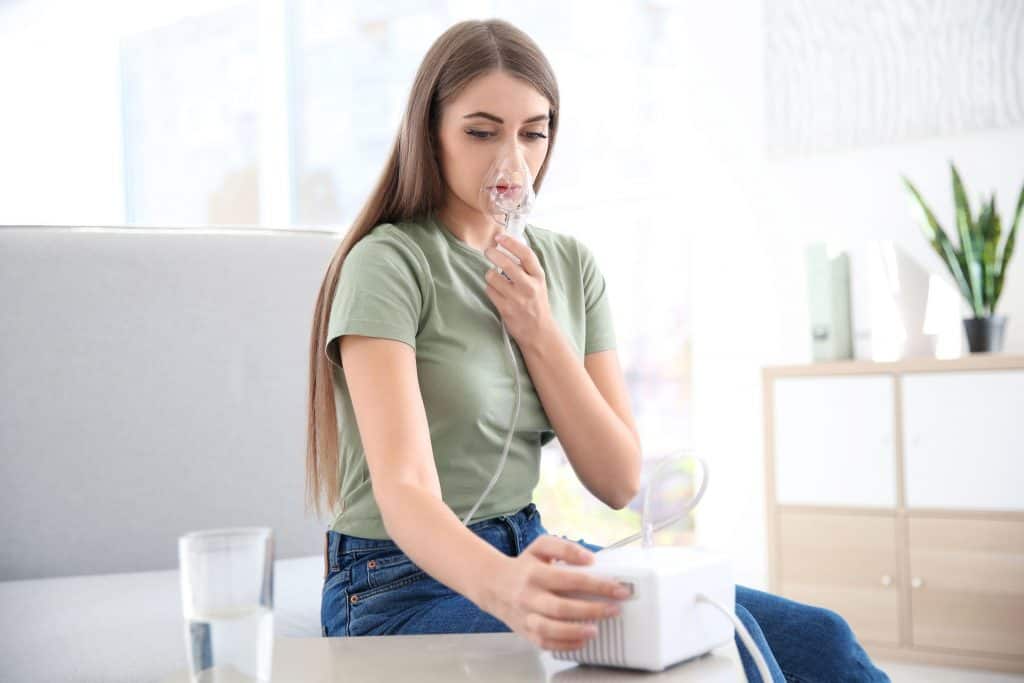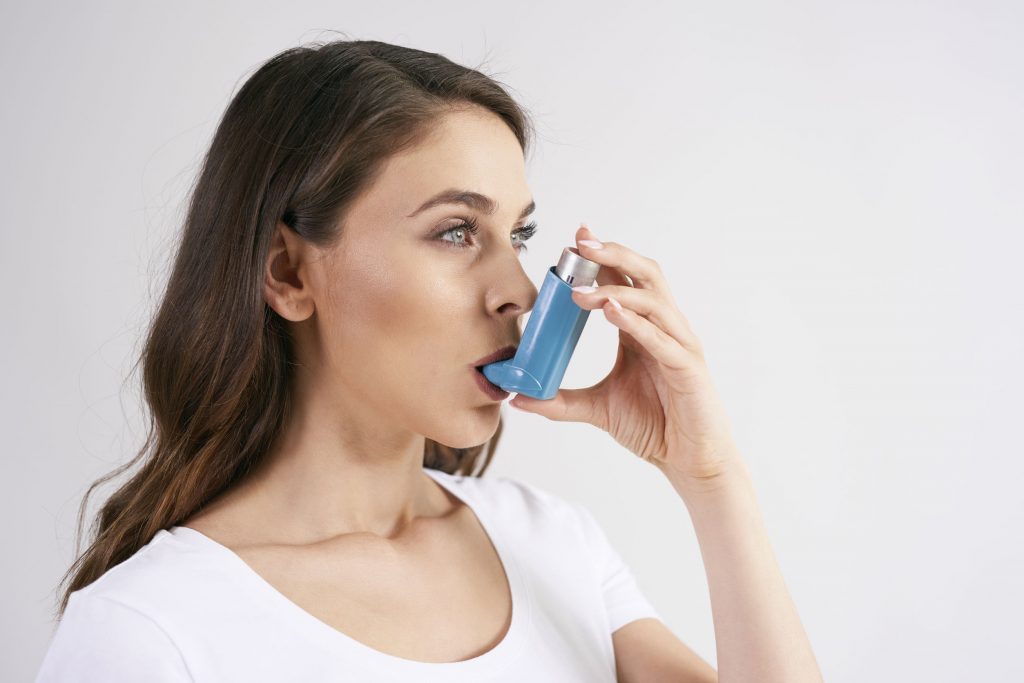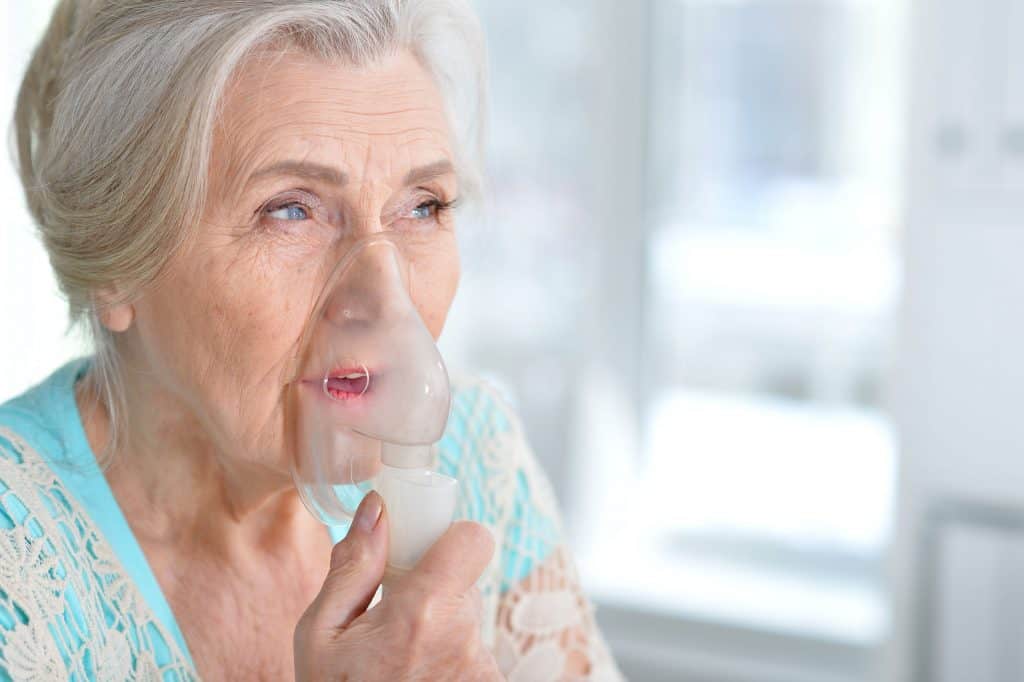Nebulizer vs Inhaler, Types, Uses, How They Work, Costs
Posted by Prescription Hope - See Editorial Guidelines (Last Updated On: Mon Mar 13 2023)
Patients who have asthma may be given a choice between a few different treatment options. But making a decision for your treatment can be difficult without the proper knowledge. So, in this article, we will be discussing the use of a nebulizer vs inhaler.
Here is a quick summary, then we’ll get into more details.
Nebulizer vs Inhaler: Both are used for treating asthma and COPD. A nebulizer delivers a fine mist that works within 15 minutes, whereas inhalers deliver a powder or spray and work within 20 minutes. Nebulizers are costly but are easy to use (no hand/breath coordination) and are effective over inhalers, but this may vary from patient to patient.
Now let’s get into some of the finer details.

What is it? Nebulizer vs Inhaler

Nebulizers and inhalers are two different devices used to treat asthma or COPD (chronic obstructive pulmonary disease).
Nebulizers are larger devices that are often used for infants and small children. They are most convenient when a large dose of asthma medication is needed.
When it comes to inhalers, there are rescue inhalers and maintenance inhalers. Rescue inhalers deliver quick-relief medications that are needed in the event of an emergency, such as an asthma attack. Maintenance inhalers contain long-term medications and are used consistently to help prevent breathing difficulties.
The difference between these devices is mainly in how they work.
Nebulizers are powered (requires a battery or an electric plug). They come as portable and tabletop versions.
Inhalers, on the other hand, are not electric or battery-powered devices and require manual coordination and effort.
Unlike nebulizers, all types of inhalers are portable and are not bulky or difficult to carry.
How They Work – Nebulizer vs Inhaler
Nebulizers need electricity through a plug or a battery-power to work. They have an air compressor, which is filled with liquid medication. The air compressor, when powered, turns the liquid to fine mist.
This mist then travels through a tube that is connected either to a mouthpiece or a face mask. A face mask is a plastic mask that covers both your nose and mouth.
Inhalers will either be breath-activated or need breath-to-hand coordination (pressing a button in the inhaler while breathing/inhaling).
How an inhaler works depends on the type of inhaler, but in general, inhalers use a capsule or liquid medication to deliver medications, which are always inhaled into the mouth.
What’s in Them? Nebulizer vs Inhaler
Both nebulizers and inhalers contain similar medications.
For nebulizers, it’s always in the form of liquid, whereas for inhalers, it’s in the form of liquid or dry powder, depending on the type of inhaler.
More specifically, nebulizers deliver bronchodilators, which are airway-opening medications such as albuterol, levalbuterol, or steroids like budesonide.
Most of the inhalers use corticosteroids like prednisone, where others contain bronchodilators, which are again airway opening medications. Sometimes, inhalers use a combination of both steroids and bronchodilators, which are called combination inhalers.
This includes combinations such as fluticasone and salmeterol (Advair Diskus), budesonide and formoterol (Symbicort), mometasone and formoterol (Dulera)

Available Types – Nebulizers vs Inhalers
Nebulizers come in three types as follows:
1. Jet nebulizers
This is the traditional type of nebulizer many of us know.
Here you measure a small amount of the medication and put it into a cup. This cup is then attached to a breathing tube and mouthpiece. This type is loud, bulky, and are not portable.
2. Ultrasonic nebulizer
This type uses ultrasonic vibration to generate the mist.
When using these types of nebulizers, heat can be transferred to the medications. Therefore, they are not beneficial when using suspensions or proteins.
However, they are much quieter and portable compared to the jet nebulizers but are costly.
3. Vibrating mesh nebulizers
This is the recent type of Nebulizer, which is the most expensive through retail pricing.
They’re quiet and are easily portable. This type is also delicate and needs careful handling and maintenance.
Like nebulizers, there are also three types of inhalers as follows:
1. Dry Powder Inhalers (DPI)
This is the traditional type of inhaler, where you insert a capsule and press a button to create holes in the capsule, which will help the capsule release the powder medication inside the capsule.
For another dose, throw out the used capsule and reload another.

This is breath activated, meaning the effectiveness of the inhaler depends on how strong, steady, and deeply you inhale. The medications inside the inhaler release to your mouth only when you breathe in (breath-activated).
2. Metered-Dose Inhalers (MDI)
This is the most commonly prescribed inhaler nowadays.
This inhaler has the medication in the form of a liquid. They have pre-measured doses, may come with or without a dose counter, and release the medication in the form of a spray.
They’re supplied as single-dose MDI and Multi-dose MDI.
This type requires breath-to-hand coordination (pressing the button on the inhaler to release the medication) to make it work.
3. Soft Mist Inhalers (SMI)
This is the latest type of inhaler, which releases the pre-measured dose of medication as a slow-moving mist.
The mist makes the medication last longer in the mouth and makes it easier to breathe the full dose into the airways. This is specifically designed for those who don’t have the lung power to breathe in quickly or strongly.
How Long does it Take to Work? – Nebulizer vs Inhaler
Both nebulizers and inhalers take roughly the same time to start working.
The slight variance is that a nebulizer takes 10 to 15 minutes to work, whereas inhalers take 15 to 20 minutes to relieve symptoms. But again, this can depend on your individual medical condition and the medication contained in the device.
Cost – Nebulizer vs Inhaler
In general, nebulizers are relatively expensive. Home nebulizers on average cost about $60.00 or more plus the cost for accessories.
Portable nebulizers will cost a little more. Many insurers will cover nebulizers as durable medical equipment.
Inhalers, on the other hand, costs in the range of $30-$60. The prices will vary based on the brand of the inhaler, the dose of medications, and so.
These prices are not subject to any insurance and may vary depending on your pharmacy and coverage.
Ease of Use – Nebulizer vs Inhaler
A nebulizer is a clear winner when it comes to ease of use. This is because a nebulizer is power-activated, and there’s nothing much you have to do except for some normal breathing.

There is no physical effort you will need to invest in using a nebulizer.
Inhalers, though, will require some coordination and greater inhalation capacity.
Learning to use your inhaler properly can be difficult. And for those who have weaker lung function, particularly the elderly, inhalers could be exhausting to use.
Effectiveness – Nebulizer vs Inhaler
The effectiveness of nebulizers and inhalers can be measured only based on how well they deliver the dosage of medications into your lungs.
In other words, how effective both these devices are on your health condition depends on how well you can use these devices.
A study in Texas found that 84% of patients misuse their inhalers, leading to inappropriate dosages. This is a concern as inhalers use life-saving respiratory drugs, and not using them properly when needed could potentially put your life at risk. Also, taking inappropriate dosages of COPD medications has the risk of worsening the health condition.
Apart from this, since a nebulizer releases the medication in a mist form, unlike inhalers, most of the medication is easily inhaled.
Moreover, a nebulizer is designed specifically to deliver the medication directly into the lungs, as the lungs are the source of problem for asthma and COPD related diseases.
This makes it understandable that nebulizers could be more effective over inhalers, especially if you have difficulties in handling an inhaler.
It is important to note here that a nebulizer will not replace a rescue inhaler. Many asthma patients are encouraged to always have their rescue inhaler with them in case of an emergency. So, in the event of an emergency, a rescue inhaler will be more effective.

Closing Thoughts
We hope this has provided you with a good comparison on the use of a nebulizer vs inhaler. As always, before making any decisions, speak to your doctor about what medications would suit you best.
For more questions regarding your specific condition, always consult your healthcare provider.
If you’re having trouble affording any of the medications you’ve been prescribed, visit our home page to learn more about Prescription Hope’s medication access service, compare the costs of your current prescriptions, and see how we can help obtain your medications at a cheaper price. Fill out an application today and start receiving Brand-Name prescription medications at your doorstep. Call us at 1-877-296-HOPE (4673) to speak to one of our representatives, we’re always happy to see how we can help.

